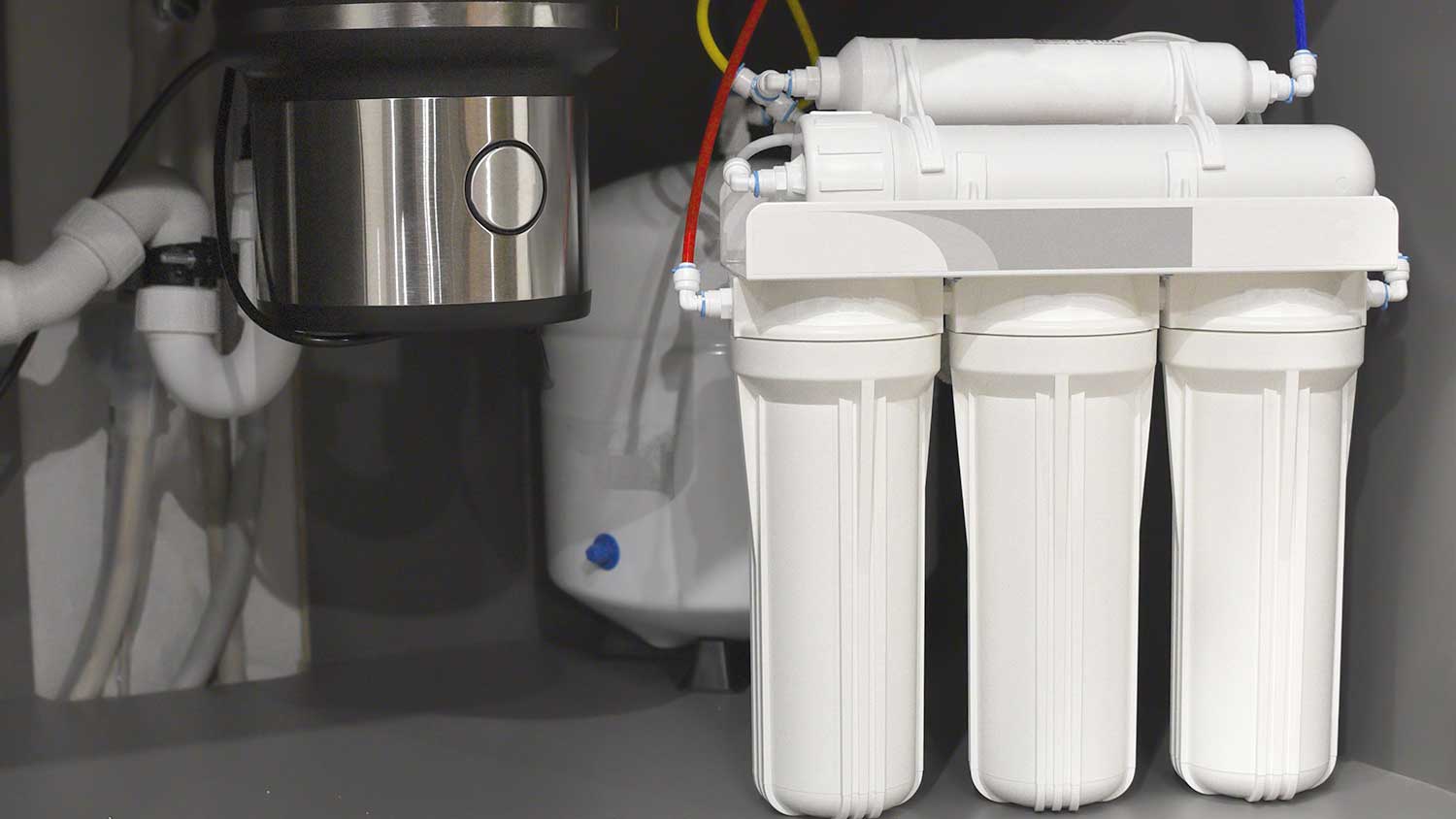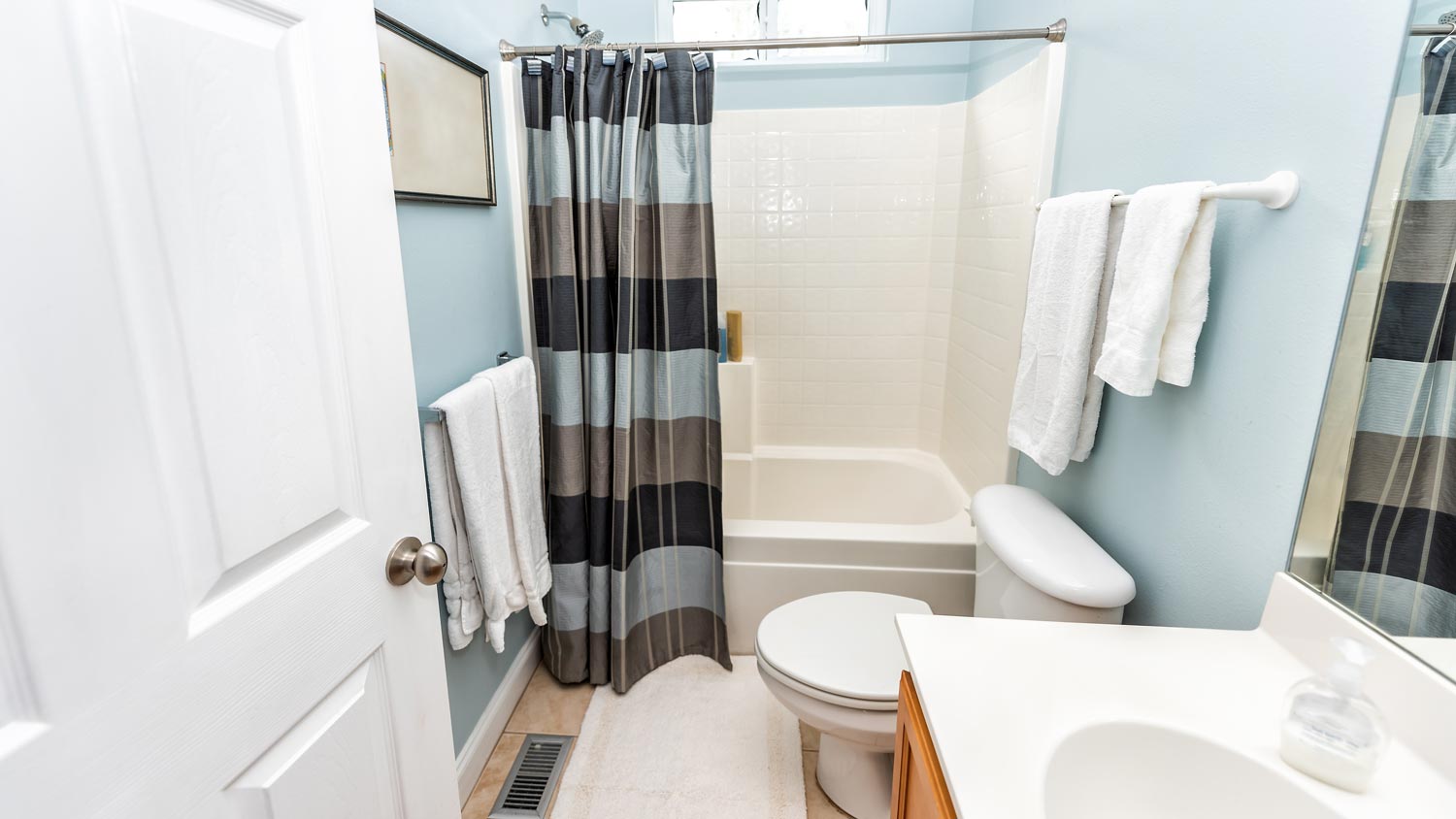
Learn about main water line repair costs in Columbus and what affects pricing to be prepared before you start getting estimates.
Get clear on what, exactly, water filtration does and how it works


There are several different types of water filtration systems.
Activated carbon filters are best for removing VOCs.
Reverse osmosis is ideal for removing bacteria and viruses.
Many filtration systems have multiple stages which might include different filters.
Water filtration systems can improve your water quality, but these systems vary quite a bit so it’s helpful to understand the different types and ways that each system filters water. Some filtration systems remove viruses and bacteria, while others remove hard minerals, making the water softer. Some are incredibly simple and affordable, such as pitchers with activated carbon filters, while others are more complex, requiring a pro to install the system. Use this guide to learn all about different water filtration systems so you can choose the best option for your household.
In general, water filtration is a process that removes impurities from water. These impurities might include sediment, bacteria, chemicals, and other particles, depending on the type of water filtration system you have. Different systems have different purification methods, ranging from physical barriers that catch sediment to chemical and biological treatments that remove contaminants.

There are several types of water filtration systems. They differ in their purification methods and the types of impurities that they can remove.
Mechanical filters are primarily used to remove visible impurities from water, like dirt, rust, and sediment. They physically trap the particles, preventing them from passing through the filter’s pores. They’re often used in the first stage of a more robust purification process, pre-filtering the water before it undergoes more filtration processes.
Activated carbon filters feature a bed of activated carbon that’s used to trap, or adsorb (not to be confused with “absorb”), organic chemicals and chlorine. They’re exceptionally effective at removing volatile organic compounds (VOCs), chlorine, pesticides, and some heavy metals, like lead. But they don’t remove minerals, salt, and microbes. Activated carbon filtration is often part of a larger filtration system, acting as a first stage of filtration in a broader process.
Reverse osmosis systems use pressure to force water through a semi-permeable membrane full of tiny pores. The membrane blocks many contaminants that can be as small as an ion, including bacteria, viruses, chemicals, and dissolved salts.
Ion-exchange filtration works by chemically replacing less desirable ions with more desirable ions. They’re often used to replace hard ions, such as calcium and magnesium, with softer ions, like sodium, effectively serving as a water softener. For that reason, they’re ideal for regions with hard water, as they can prevent scale buildup in pipes and appliances. But they need to be paired with other types of filtration if you want to remove more contaminants, like VOCs, viruses, and bacteria.
Ultraviolet (UV) filters use UV light to disinfect the water. The light damages the DNA and RNA of viruses and bacteria, making them harmless. They can kill a wide range of microorganisms, but they need clear water to work well, so they’re often used as a final stage in a comprehensive filtration process.
Ceramic is a porous material that, when used as a water filter, can trap bacteria that commonly cause waterborne diseases, like E. coli and Salmonella. They can also reduce water’s turbidity, aka its cloudiness, resulting in clear and neutral-tasting water. When paired with activated carbon, ceramic filters can reduce some chemicals and heavy metals in the water as well.
Water distillation systems boil water to produce steam, which then cools and condenses back into a liquid while leaving behind nearly all impurities, including minerals, bacteria, and viruses. Distillation’s high degree of purification means it’s commonly used in settings where extremely pure water is essential, like medical and laboratory settings.

Filtering your water brings several benefits, but those benefits can depend on the type of system you have. For instance, some filtration systems remove nearly all impurities, while others can only remove a few.
Water Quality: All water filtration systems improve water quality by removing impurities, but the type and extent of impurities they remove depends on the system.
Taste and Odor: Many water filtration systems can remove odors in the water and/or improve the taste. However, taste is subjective. For instance, some people prefer the taste of water with lots of minerals, while others like the more neutral taste of mineral-free water.
Health: Many water filtration systems remove potentially harmful impurities, like bacteria and viruses, which can lead to illnesses, so they can help to protect your health.
Scale Reduction: If you opt for a water filtration system that reduces hard mineral content like an ion-exchange system, then your water will be softer, reducing the scale buildup that hard water can cause on metal and glass.
Environmental Impact: If you regularly find yourself buying bottled water for the filtration benefits, then you can reduce your environmental impact by forgoing the plastic bottles in favor of a filtered water system in your home.
Both water filtration and purification can improve your water quality, but there are key differences between the two. Namely, water filtration systems are designed to remove many physical impurities from water, which can range from viruses and bacteria to heavy metals, minerals, and VOCs, depending on the type of filter.
Water purification takes filtration a step further. It typically involves a more comprehensive process that includes filtration as well as additional steps, such as using UV light, to remove even more contaminants than filtration alone. Purification systems are especially critical in areas with heavily contaminated drinking water or high risks of waterborne diseases. They’re also often used in medical and lab settings where water is required to be as pure as possible.
The best water filtration system for you depends on your needs, priorities, and budget. For instance, if you’re adamant about removing VOCs, then a filtration system that includes activated carbon is your best bet. And if sticking to a lower budget is at the top of your priorities, then a pitcher or faucet filtration system is worth considering since they’re more affordable than many other systems, such as whole-house water filtration systems. So make sure to consider all of your priorities and compare them against the various types of filtration systems to find the best fit for your household.
From average costs to expert advice, get all the answers you need to get your job done.

Learn about main water line repair costs in Columbus and what affects pricing to be prepared before you start getting estimates.

Discover the leading factors affecting your main water line replacement cost in Columbus, including length, material selection, and installation details.

Learn how much plumbers cost in Columbus, Ohio. Discover pricing for faucet repairs, pipe work, and emergency services, plus how you can save money.

Pressure-assist toilets use pressurized air and water to whisk waste away, but you might think twice about purchasing one due to pressure-assist toilet problems.

Want to get water down your drains quickly and efficiently? You need the right sink drain pipe size. Learn here how to find the right size and how to measure.

Dealing with gurgling from your toilet when you shower? You probably have an issue with your venting system. Learn how to diagnose and fix the problem.